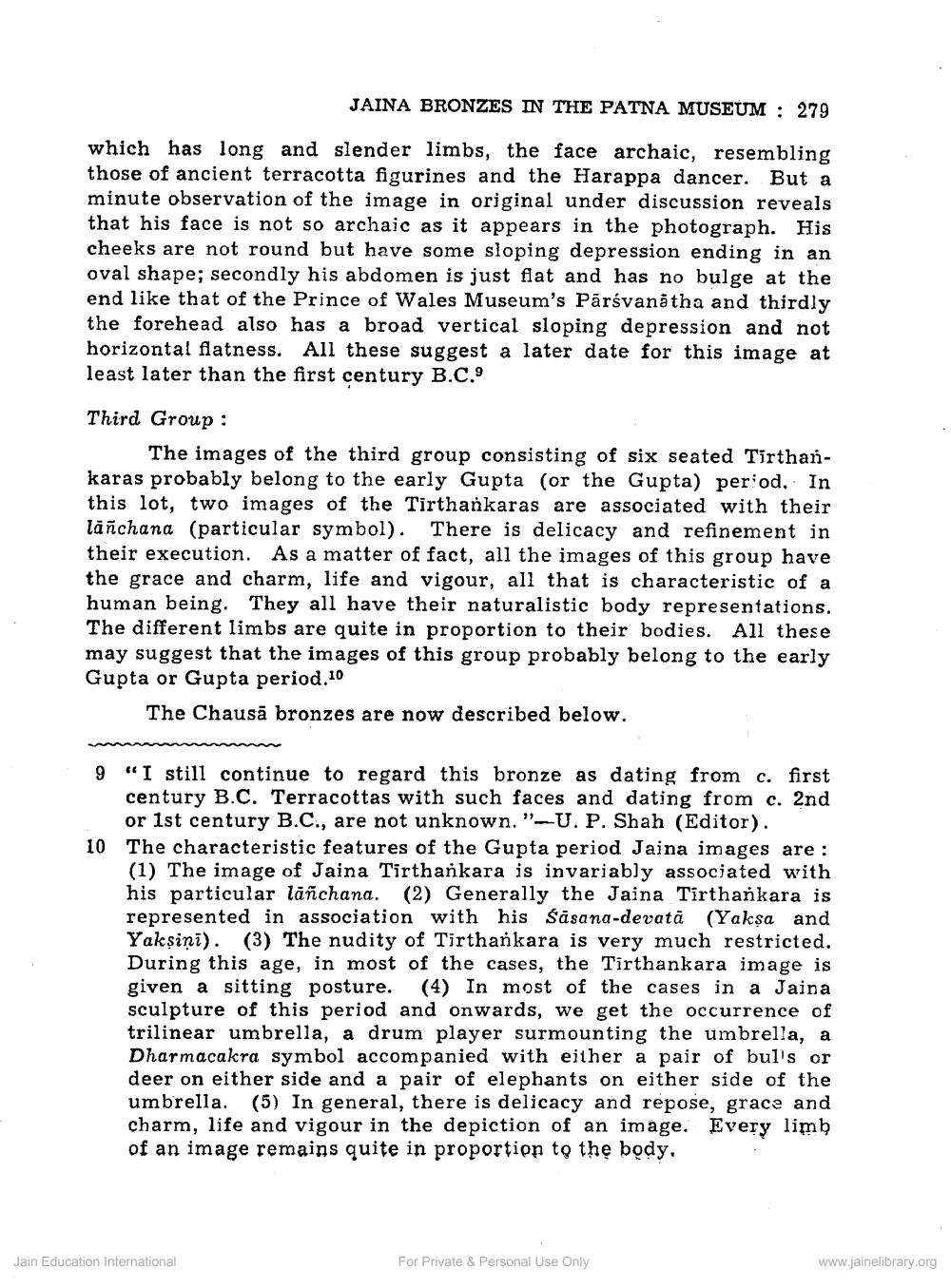Book Title: Jaina Bronzes the Patna Museum Author(s): Harikishor Prasad Publisher: Z_Mahavir_Jain_Vidyalay_Suvarna_Mahotsav_Granth_Part_1_012002.pdf and Mahavir_Jain_Vidyalay_Suvarna_ View full book textPage 5
________________ JAINA BRONZES IN THE PATNA MUSEUM : 279 which has long and slender limbs, the face archaic, resembling those of ancient terracotta figurines and the Harappa dancer. But a minute observation of the image in original under discussion reveals that his face is not so archaic as it appears in the photograph. His cheeks are not round but have some sloping depression ending in an oval shape; secondly his abdomen is just flat and has no bulge at the end like that of the Prince of Wales Museum's Pārsvanátha and thirdly the forehead also has a broad vertical sloping depression and not horizontal flatness. All these suggest a later date for this image at least later than the first century B.C.' Third Group : The images of the third group consisting of six seated Tirthankaras probably belong to the early Gupta (or the Gupta) period. In this lot, two images of the Tirthankaras are associated with their lañchana (particular symbol). There is delicacy and refinement in their execution. As a matter of fact, all the images of this group have the grace and charm, life and vigour, all that is characteristic of a human being. They all have their naturalistic body representations. The different limbs are quite in proportion to their bodies. All these may suggest that the images of this group probably belong to the early Gupta or Gupta period.10 The Chausā bronzes are now described below. 9 “I still continue to regard this bronze as dating from c. first century B.C. Terracottas with such faces and dating from c. 2nd or 1st century B.C., are not unknown."-U. P. Shah (Editor). 10 The characteristic features of the Gupta period Jaina images are : (1) The image of Jaina Tirthankara is invariably associated with his particular lāñchana. (2) Generally the Jaina Tirthankara is represented in association with his Śäsana-devatā (Yaksa and Yakşiņi). (3) The nudity of Tirthankara is very much restricted. During this age, in most of the cases, the Tirthankara image is given a sitting posture. (4) In most of the cases in a Jaina sculpture of this period and onwards, we get the occurrence of trilinear umbrella, a drum player surmounting the umbrella, a Dharmacakra symbol accompanied with either a pair of bul's or deer on either side and a pair of elephants on either side of the umbrella. (5) In general, there is delicacy and repose, grace and charm, life and vigour in the depiction of an image. Every limb of an image remains quite in proportion to the body, Jain Education International For Private & Personal Use Only www.jainelibrary.orgPage Navigation
1 ... 3 4 5 6 7 8 9 10 11 12 13 14 15
